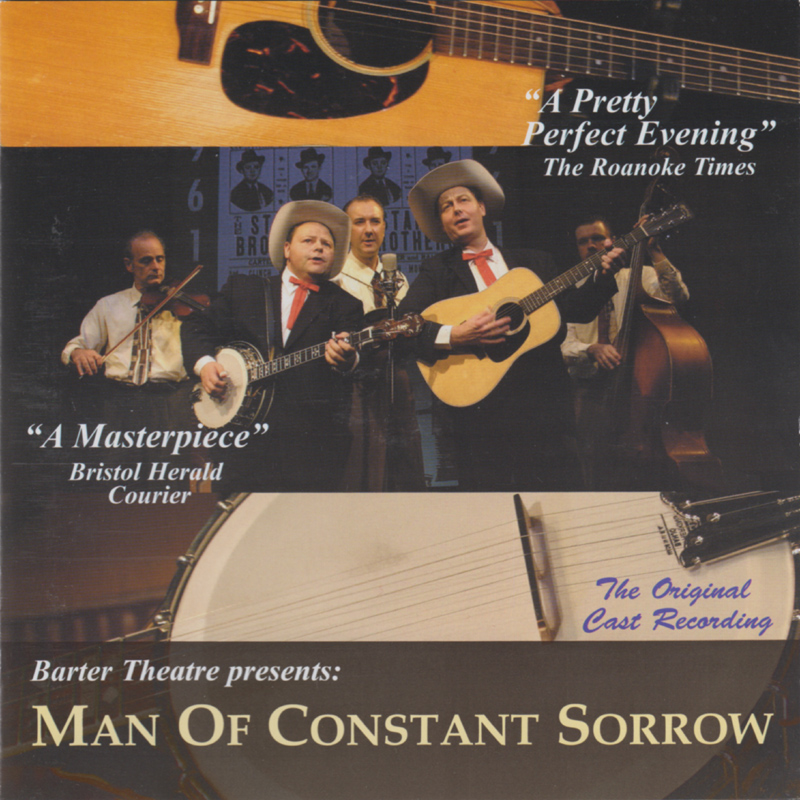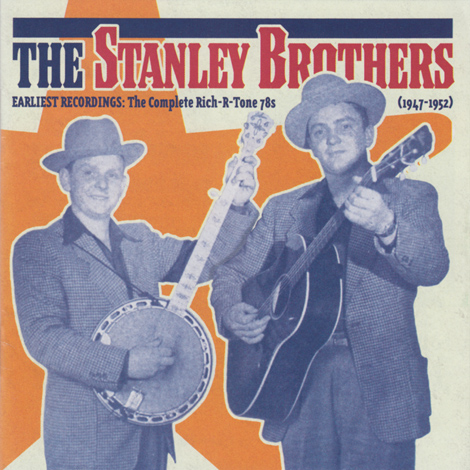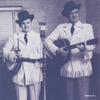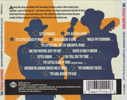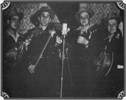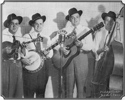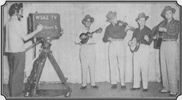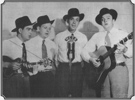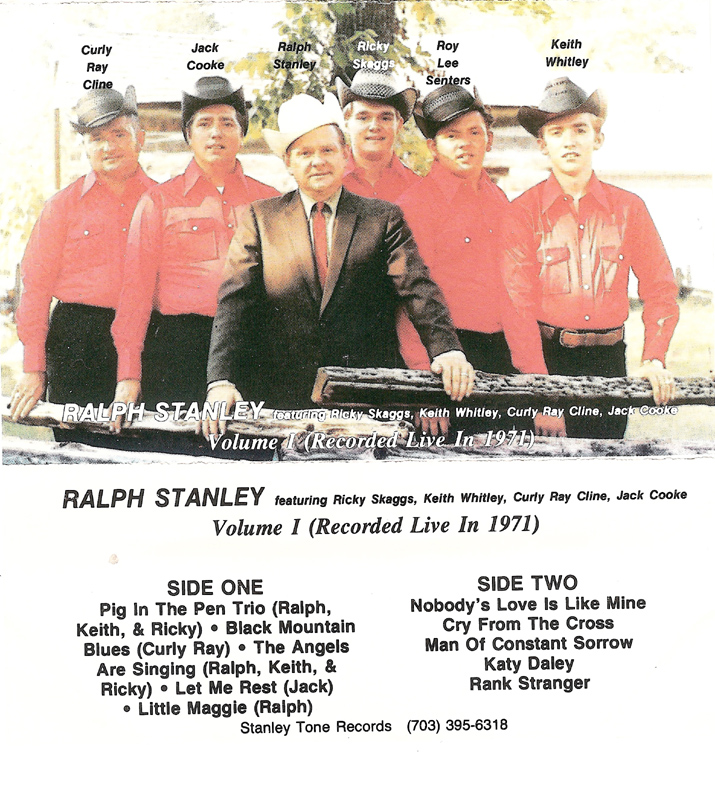- Bill Gatton Chevy Show
- Carter Stanley Interview - 1966
- How Far To Little Rock? - Search live shows
- Jim Kent's film 'Ralph Stanley's Bluegrass Festival'
- New WCYB Recording
- Pound Va. 1972 - Video
- Replica Rebel T-Shirt
- R.I.P. Ralph
- Roy Lee Centers Last Show
- Song & Memory Books
- Stanley Brothers - WCYB Acetate
- Stanley Standard - Carter Stanley Memorial Issue
- Suwannee River Jamboree
- Up In The Cloud - 1957-62
The Stanley Brothers - Earliest Recordings:
The Complete Rich-R-Tone 78s 1947 - 1952
(Rounder 11661-1110-2) 2004
This is an anthology of the Stanley Brothers recordings for Jim Hobart Stanton's 'Rich-R-Tone' label, which they made at the start of their professional career. As such it captures the youthful Stanley's as they developed from being a Mainer style string band to playing Bill Monroe influenced bluegrass.
It is the third time the Rich-R-Tone recordings have been reissued together, and for my money it's the best. The material was first compiled on LP as Their Original Recordings in an adulterated form in 1966, and a CD reissue Earliest Recordings on Revenant came out in 1997. That version has all the 'top-end' highly attenuated and sounds muted, whereas this third anthology, sounds a lot brighter, as long as you're willing to put up with a certain amount of surface hiss.
In all, the Stanley's recorded four sessions for the label, the first of which featured Death Is Only A Dream, I Can Tell You The Time, Mother No Longer Awaits Me At Home and The Girl Behind The Bar. Ralph later recalled:- "We come out of the studio feeling sky-high. We'd made our first records. Carter was so excited he grabbed the acetate for 'Death Is Only A Dream' so we could listen to it at home. We wanted to hear for ourselves what we sounded like. We put it on the record player and just about wore it out. Sounded mighty fine to us, our voices coming off a record."
"When we brought the acetate record back to Hobe, he threw a fit. An acetate pressing was all you had to make a master disc to press your records, and now it had the surface noise from our record player's needle diggng into the wax. Hobe was irate; he didn't call his label Rich-R-Tone for nothing, and now he had an acetate with an awful hiss in the background. So Hobe held it from release for a good long while, a few years or so, I believe. You can still hear the surface noise on it today on compact disc."[1]
From the noise and reduction in fidelity, it sounds like the acetates for both Death Is Only A Dream and I Can Tell You The Time were affected, as they are significantly poorer quality sound wise that the other two songs cut at the first session.
Both the first and second recordings sessions took place at WOPI radio station in Bristol. The second in late 1947 or early 1948 was recorded without a bass and yielded the perennial Little Maggie, The Jealous Lover, The Little Glass Of Wine and Our Darling's Gone.
By the time the third session was recorded in Mid 1948,[2] Ralph had switched from the two finger style of banjo playing he'd learnt from listening to Wade Mainer, to the 3 finger style he'd been developing. Generally in interviews Ralph was quite coy about how he learnt three finger style, saying "Snuffy Jenkins was actually the first fellow I heard use the three-finger. There was a fellow by the name of Hoke Jenkins I heard in Knoxville, Tennessee and there was a fellow down in North Carolina, Jes Fulbright, he played some of the radio there. But I was trying to play that (three finger) before Earl and Lester came to Farm And Fun Time"[3]. Later, in his Man Of Constant Sorrow book he also talked about how Earl and Louise Scruggs had visited with The Stanleys in the gap between when Earl had left Bill Monroe and before the formation of Flatt & Scruggs. Ralph:- "Earl had stayed about a week and he went on a couple of shows with us. Earl was real friendly with me and I got to asking him about how he worked out his style, and he kindly showed me some stuff on the banjo in the backseat of the car when we were traveling. That helped me some, but I still didn't try to get the same lick Earl did."[4]
The third session, which resulted in a cover of Bill Monroe's Molly And Tenbrook and Leslie Keith's The Rambler's Blues, also featured Art 'Skip' Wooten on fiddle. Art has the distinction of being in the first line-up of Bill Monroe's Blue Grass Boys, and also featured on his 1941 session that included Orange Blossom Special and Back Up And Push.
The Stanley's version of Molly And Tenbrook is also notable for being the first cover of a Bill Monroe song, the first attempt to replicate Bill's bluegrass sound. It didn't go down well with Bill however, who although he had recorded Molly.. on 28th Oct 1947, didn't get his cut released until 12th Sept 1949,[5] a year after The Stanley Brothers. Both songs also featured lead vocal by Pee Wee Lambert, whose mandolin and vocal style was hugely influenced by Monroe. This session also didn't feature a bass.
Ralph later talked about how The Stanley's had learnt Molly And Tenbrook:- "All of us Clinch Mountain Boys would be out there in the audience, and each man would write down a verse on a piece of paper and we'd learn it that way. The melody we could learn by ear, but the words was tough to get dwn from one listen, so we'd put together all those lines from those scraps of paper, and we'd work out the song."[6]
At the end of 1948 Columbia Records began to show an interest in The Stanley Brothers and they recorded for them exclusively between March 1949 and April 1952. Shortly after being dropped by the label, The Stanley's recorded one last session for Rich-R-Tone at WLSI in Pikeville, Kentucky. Jim Stanton had been booking some gigs for them, and the session was a way of drumming up interest in the area.
This session included Jim Williams on mandolin and Art Stamper on fiddle, but once again didn't include a bass. Four songs were cut, with a third recording of Little Glass Of Wine, and a version of Bill Monroe's The Little Girl And The Dreadful Snake. Of the latter Carter said "That's the first song that I ever learned to sing with Bill when I went to work with him" in the spring of 1951.[7] Bill also recorded it himself at around the same time on the 18th/19th July 1952.[8] This final Rich-R-Tone session is also notable for the version of Little Birdie which is the first recording to feature Ralph playing clawhammer banjo.
CD playing time is 35:07 and it comes with a 24 page booklet with detailed liner notes by Gary B. Reid, as well as numerous rare photographs of the period. The liner notes and most of the photo's are near enough identical to that found on the earlier Revenant Earliest Recordings CD.
Sound quality can be quite hissy in places, but is probably the best you'll get, all things considered, and to my ears far better than the alternative of filtering out all the high frequencies. The songs are sequenced I guess, to make for a more pleasant listening experience, but it's worthwhile playing them in the order they were recorded if you want to hear the way the Stanley Brothers sound evolved.
For much more detailed information on these sessions, check Gary B. Reid's The Music Of The Stanley Brothers book, pages 6-19, 33-35 and 39.
| Track: |
Title: |
Time: |
Date: |
Original Release: |
||||||||||||||||||
|---|---|---|---|---|---|---|---|---|---|---|---|---|---|---|---|---|---|---|---|---|---|---|
| A-1 |
Little Maggie |
02:20 |
Late 1947 / Early 1948 |
Rich-R-Tone RRT-423 |
||||||||||||||||||
| P.D. |
||||||||||||||||||||||
| Gtr | Ld Vcl - Bjo | Fid | Mnd | |||||||||||||||||||
| Carter Stanley |
Ralph Stanley |
Leslie Keith |
Darrell 'Pee Wee' Lambert |
|
|
|||||||||||||||||
| A-2 |
The Jealous Lover |
02:14 |
Late 1947 / Early 1948 |
Rich-R-Tone RRT-435 |
||||||||||||||||||
| C. Stanley |
||||||||||||||||||||||
| Ld Vcl - Gtr | Tn Vcl - Bjo | Fid | Mnd | |||||||||||||||||||
| Carter Stanley |
Ralph Stanley |
Leslie Keith |
Darrell 'Pee Wee' Lambert |
|
|
|||||||||||||||||
| A-3 |
The Little Glass Of Wine |
03:07 |
Late 1947 / Early 1948 |
Rich-R-Tone RRT-423 |
||||||||||||||||||
| C. Stanley |
||||||||||||||||||||||
| Ld Vcl - Gtr | Tn Vcl - Bjo | Fid | Mnd | |||||||||||||||||||
| Carter Stanley |
Ralph Stanley |
Leslie Keith |
Darrell 'Pee Wee' Lambert |
|
|
|||||||||||||||||
| A-4 |
Our Darling's Gone |
02:14 |
Late 1947 / Early 1948 |
Rich-R-Tone RRT-435 |
||||||||||||||||||
| C. Stanley |
||||||||||||||||||||||
| Ld Vcl - Gtr | Tn Vcl - Bjo | Fid | Mnd | |||||||||||||||||||
| Carter Stanley |
Ralph Stanley |
Leslie Keith |
Darrell 'Pee Wee' Lambert |
|
|
|||||||||||||||||
| A-5 |
Molly And Tenbrook |
02:27 |
Mid 1948 |
Rich-R-Tone RRT-418 |
||||||||||||||||||
| Bill Monroe |
||||||||||||||||||||||
| Gtr | Bjo | Fid | Ld Vcl - Mnd | |||||||||||||||||||
| Carter Stanley |
Ralph Stanley |
Art Wooten |
Darrell 'Pee Wee' Lambert |
|
|
|||||||||||||||||
| A-6 |
The Little Girl And The Dreadful Snake |
03:06 |
Mid 1952 |
Rich-R-Tone RRT-1055 |
||||||||||||||||||
| Albert Price (aka Bill Monroe) |
||||||||||||||||||||||
| Ld Vcl - Gtr | Tn Vcl - Bjo | Fid | Mnd | |||||||||||||||||||
| Carter Stanley |
Ralph Stanley |
Art Wooten |
Jim Williams |
|
|
|||||||||||||||||
| A-7 |
Are You Waiting Just For Me? |
02:20 |
Mid 1952 |
Rich-R-Tone RRT-1055 |
||||||||||||||||||
| Ernest Tubb |
||||||||||||||||||||||
| Ld Vcl - Gtr | Tn Vcl - Bjo | Fid | Mnd | |||||||||||||||||||
| Carter Stanley |
Ralph Stanley |
Art Wooten |
Jim Williams |
|
|
|||||||||||||||||
| A-8 |
Death Is Only A Dream |
02:22 |
Early/mid 1947 |
Rich-R-Tone RRT-446 |
||||||||||||||||||
| C.W. Ray / A.J. Buchanan |
||||||||||||||||||||||
| Ld Vcl - Gtr | Bt Vcl | Tn Vcl - Mnd | Bs Vcl | |||||||||||||||||||
| Carter Stanley |
Ralph Stanley |
Darrell 'Pee Wee' Lambert |
Ray Lambert |
|||||||||||||||||||
| A-9 |
Little Birdie |
02:00 |
Mid 1952 |
Rich-R-Tone RRT-1056 |
||||||||||||||||||
| P.D. |
||||||||||||||||||||||
| Gtr | Ld Vcl - Bjo | Fid | Mnd | |||||||||||||||||||
| Carter Stanley |
Ralph Stanley |
Art Stamper |
Jim Williams |
|
|
|||||||||||||||||
| A-10 |
I Can Tell You The Time |
02:11 |
Early/mid 1947 |
Rich-R-Tone RRT-446 |
||||||||||||||||||
| Adger M. Pace |
||||||||||||||||||||||
| Ld Vcl - Gtr | Bt Vcl | Tn Vcl - Mnd | Bs Vcl | |||||||||||||||||||
| Carter Stanley |
Ralph Stanley |
Darrell 'Pee Wee' Lambert |
Ray Lambert |
|||||||||||||||||||
| A-11 |
The Little Glass Of Wine |
02:57 |
Mid 1952 |
Rich-R-Tone RRT-1056 |
||||||||||||||||||
| C. Stanley |
||||||||||||||||||||||
| Ld Vcl - Gtr | Tn Vcl - Bjo | Fid | Mnd | |||||||||||||||||||
| Carter Stanley |
Ralph Stanley |
Art Stamper |
Jim Williams |
|
|
|||||||||||||||||
| A-12 |
Mother No Longer Awaits Me At Home |
02:43 |
Early/mid 1947 |
Rich-R-Tone RRT-420 |
||||||||||||||||||
| R. Stanley / C. Stanley |
||||||||||||||||||||||
| Ld Vcl - Gtr | Tn Vcl - Bjo | Fid | Mnd | Bs | ||||||||||||||||||
| Carter Stanley |
Ralph Stanley |
Leslie Keith |
Darrell 'Pee Wee' Lambert |
Ray Lambert |
|
|||||||||||||||||
| A-13 |
The Rambler's Blues |
02:48 |
Mid 1948 |
Rich-R-Tone RRT-418 |
||||||||||||||||||
| Pee Wee Lambert |
||||||||||||||||||||||
| Gtr | Bjo | Fid | Ld Vcl - Mnd | |||||||||||||||||||
| Carter Stanley |
Ralph Stanley |
Art Wooten |
Darrell 'Pee Wee' Lambert |
|
|
|||||||||||||||||
| A-14 |
The Girl Behind The Bar |
02:17 |
Early/mid 1947 |
Rich-R-Tone RRT-420 |
||||||||||||||||||
| C. Stanley |
||||||||||||||||||||||
| Ld Vcl - Gtr | Tn Vcl - Bjo | Fid | Mnd | Bs | ||||||||||||||||||
| Carter Stanley |
Ralph Stanley |
Leslie Keith |
Darrell 'Pee Wee' Lambert |
Ray Lambert |
|
|||||||||||||||||
Other artwork / related images:
[1] Ralph Stanley and Eddie Dean's 'Man Of Constant Sorrow' book (p.109).
[2] The liner notes and some other sources give WOPI as the location for the third session, but Gary B. Reid's more recent "The Music Of The Stanley Brothers" book says it was recorded as WCYB.
[3] Liner notes, also in Gary B. Reid's "The Music Of The Stanley Brothers" (p. 15) with source being an interview with Ralph by Charlie Sizemore from March 1981.
[4] Ralph Stanley and Eddie Dean's 'Man Of Constant Sorrow' book (p.134-135).
[5] Neil V. Rosenberg and Charles K. Wolfe's 'The Music Of Bill Monroe' (p. 74 & p.298).
[6] Ralph Stanley and Eddie Dean's 'Man Of Constant Sorrow' book (p.135).
[7] Gary B. Reid liner notes to 'Stanley Series Vol. 2 #4 (Copper Creek CCSS-V2N4) 1987.
[8] Neil V. Rosenberg and Charles K. Wolfe's 'The Music Of Bill Monroe' (p. 92).

